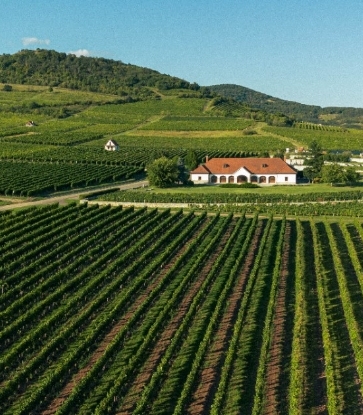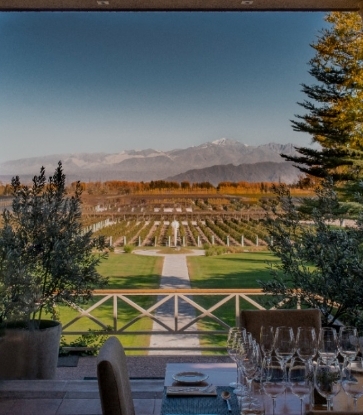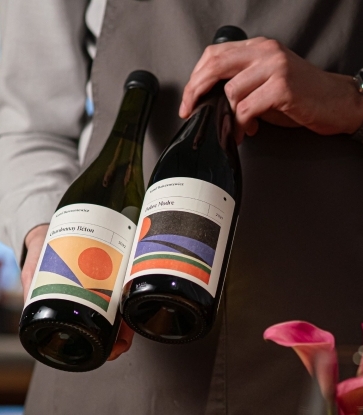Today is an epicure’s holiday that we can stand behind: National Wine Day. Though wine may not be produced in all 50 states, grapes are certainly grown in all of them. These days you can find more atypical varietals in well-known regions, such as Caricante—a Sicilian grape—in the heart of California’s Central Coast.
We asked the experts at The Wine Advocate what grapes we should turn our attention to in America’s most celebrated wine regions. Here’s what you should put on your radar—and what you should be pouring this National Wine Day.

Sonoma County: Pinot Meunier
“Pinot Meunier doesn’t often make it out of Champagne, and when it does, it doesn’t often produce anything but sparkling wines. However, there are a couple of great examples of Pinot Meunier from far-flung places making some compelling arguments for giving this grape a little more love and attention. The first great example I encountered when I was reviewing Australia was at Best’s Winery in the Grampians of Victoria.
Here, there are plantings of this variety that go right back to 1867, from a nursery block of original James Busby clones. More recently, I stumbled upon a Pinot Meunier being made by Alquimista Cellars on Sonoma Mountain. It offers wonderfully floral, perfumed red berry flavors and evocative earthy layers with bags of finesse—absolutely worth seeking out.” — Lisa Perrotti-Brown

California Central Coast: Caricante
“One exciting new venture is Kevin Harvey's Aeris project, which is about to release a Californian Caricante. Harvey was looking for a grape variety adapted to warmer parts of California where the geology is very interesting, but temperatures are a bit too high to make successful Chardonnay. Caricante is a Sicilian white that produces tangy, salty wines, and the soon-to-be-released debut offering from Aeris is very promising. The wine is made by the same team that produce Harvey's Pinot Noir, Chardonnay and Syrah for Rhys Vineyards.” — William Kelley

Oregon: Rhône Blends and Gewürztraminer
“The Willamette Valley has become synonymous with Pinot Noir and Chardonnay, but other wine regions in Oregon remain less-developed—which means that growers are experimenting with exciting new varieties.
In Southern Oregon (which includes the AVAs of Umpqua Valley, Rogue Valley, Applegate Valley, Red Hill Douglas County and Elkton, Oregon) the coastal mountains create a rain shadow effect. The dry, sunny climate makes for a different set of grapes than those found in Willamette: Cabernet Sauvignon, Syrah, Merlot, Viognier and even Tempranillo! Cowhorn and Quady are two wineries specializing in Rhône blends, and their whites are especially delicious. Try the 2014 Cowhorn Marsanne/Roussanne or the 2015 Quady North White Blend Pistoleta, a blend of Marsanne, Roussanne, Viognier and Grenache Blanc.
In Northern Oregon on the border with Washington, the shared AVAs of Walla Walla, Columbia Valley and Columbia Gorge create opportunities for new varieties to be planted. In Walla Walla you’ll find Cabernet Sauvignon, Merlot and Syrah; the varied climates of Columbia Gorge and Columbia Valley provide a home for an array of grapes ranging from Cabernet Sauvignon and Chardonnay to Riesling and Gewürztraminer. Phelps Creek is a great producer to seek out if you want to try a wide range of varieties.” — Erin Brooks

Virginia: Petit Manseng and Tannat
"As an emerging region that often has too little experimentation, it's nice to see some grapes featured in Virginia that aren't typically seen. Muse makes Roussanne and Marsanne, for instance, not to mention a bit of Grenache. In Virginia and other 'off the beaten track' locations we can also see some nice Traminette, one of the more successful hybrids.
Sauvignon Blanc has taken hold, thanks to some exceptional offerings from Glen Manor and Linden, in particular.
But in white and red the most important Virginia initiatives might well be Petit Manseng and Tannat. That's an area where we already have a fair body of work for both. They both look promising." — Mark Squires




















